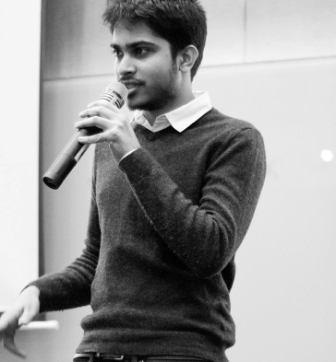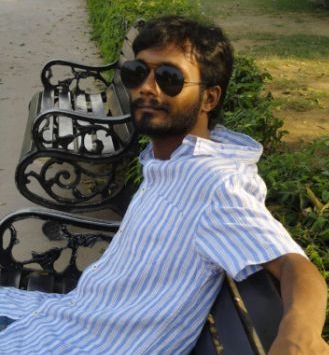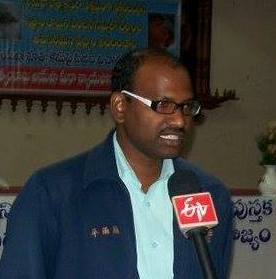Pranav Kuttiah
 In the aftermath of the horrific mass molestation that took place in Bangalore on New Year’s Day, I put up a small status on Facebook. As a Bangalorean, I found that the event was deplorable, but certainly not shocking. Bangalore, in my experience, has always been a space of entrenched casteism and patriarchy that its upper-caste residents like to shrug off so as to compare themselves favourably to northern parts of India. The exact words I used were:
In the aftermath of the horrific mass molestation that took place in Bangalore on New Year’s Day, I put up a small status on Facebook. As a Bangalorean, I found that the event was deplorable, but certainly not shocking. Bangalore, in my experience, has always been a space of entrenched casteism and patriarchy that its upper-caste residents like to shrug off so as to compare themselves favourably to northern parts of India. The exact words I used were:
“I’ve lived in Bangalore pretty much most of my life, and with a fair idea of the city I think it’s pretty safe to say that what happened on New Year’s was utterly deplorable but certainly not shocking.
As south Indians, we are experts in the art of sweeping our sexism, casteism etc under the carpet and attempting to push the entirety of the blame of the “Indian image” on people from UP, Bihar, Delhi etc (and let’s not pretend there isn’t a caste context to these generalizations, because when it’s convenient we all migrate across the country for opportunities).
Whenever we discuss something like sexism or casteism we get stuck on overt, in-your-face instances of discrimination. The truth is that these issues are systemic, they are insidious, they are a part of the very fabric of the way our societies function – they exist and are reinforced in every structure from the home to the school to the workplace.
As Bangaloreans we have long been happy to call out Delhi and others as misogynists etc without ever interrogating our own surroundings. Our brand of moral policing doesn’t require violence – it is so subtle that the mere underlying threat of social exclusion is enough to bring any one in line. Moreover, we indulge in celebrations of this sickening casteist culture – always thrilled to depict south Indian women as some domesticated Kancheevaram Sari-wearing woman who doesn’t say or do much other than Carnatic music, or patriarchal fathers as some simple “Hindu-reading people”, or laughing at how all kids are forced to be doctors or engineers and not explore their talents.
So is Bangalore patriarchal?
I can only speak from the experience that almost any cultural or social activity or club I’ve been a part of in the city has had a woeful under-representation of women (and a decreasing number with the passing of years). I know that many many women have at some point or the other been made to compromise on an education or their work to get married and have kids. I know the onus of housework in 99% of my friend’s houses fall entirely on their women members. I know a lot of my female friends will have to struggle immensely against their families and will almost certainly be excommunicated if they don’t want domestic lives. I know any girl who didn’t conform to a standard version of girls are supposed to do was always ostracized. And most importantly I know, at every stage of my life here, that girls’ bodies have been sexualized and policed with regressive and colonial ideas, with ‘honour’ and ‘respect’ and ‘tradition’ being cited the most. And let’s not pretend that each and every one of us don’t know some woman or the other across class lines who hasn’t been pursued or harassed or eve-teased or molested at some function or party or club or rally or bus or public place.
Yes, what happened is truly and completely sickening. But it would only be shocking if you lived with your eyes closed all these years.”
I received flak from many quarters for suggesting my city was patriarchal – but the most intriguing and common theme in all the criticisms was the question as to what caste had to do with it. Bangalore may not be a place for gender equality, many agreed, but surely Bangalore had overcome its caste problems? What does caste have to do with anything in the city? This is, of course, a common theme in the understanding of caste for metro elites – succinctly summed up in a meme by Just Savarna Things:

I’ve often wondered if some questions are worth answering. To me, the answer to such a question would only be acceptable to someone to whom it was blindly obvious in the first place. Nonetheless, I am prepared to undertake the task of setting forth some facts that should be common knowledge but aren’t.
The segregation of people along the axis of caste is an institutionalized phenomenon with a distinct history – which plays out with well-formed spatial dynamics. For the purpose of highlighting some key sections of caste in Bangalore, I will just take up a few cases and analyze them critically – these include schooling, housing, cultural representation and access to cultural activities; all drawn from lived experience in the city.Caste has everything to do with it – the entire city is built on a monumental foundation of caste.
That should’ve become obvious somewhere between being taught that pure ghee masala dosas is authentic Bangalorean culture or that it was no accident that you are listening to Carnatic music at the metro station.
But for what it’s worth, here goes.
Prejudice, from birth: Negotiating schools in Bangalore
The school system in Bangalore (which I suspect is the case in many urban centres) is wrought with caste. While some older schools established by missionaries have shown token egalitarianism in taking in people from varied backgrounds, many private schools – especially that fall under the purview of the CBSE and are considered training grounds for engineering and medical colleges – put out firm symbolism that their schools are meant for particular groups. In these spaces, there is a nostalgia for the ‘Gurukul’ and associated forms of pedagogy. I know from personal experience that many students and I, although residents of a posh, upper-class neighbourhood, did not go to the school most proximate to us out of our parents’ concern that we wouldn’t “fit in” with the culture. An interesting article that was published in The Hindu last year weighed in the views of some school students in Chennai about the Right to Education legislation1. The quotes were quite revealing, if unsurprising:
“A. Narayan, of P.S. Senior Secondary School, says: “Our school has a certain culture and our parents have sent us here expecting children from similar backgrounds. It is a good thing that we will get exposed to people from different backgrounds, but we might not turn out the way our parents want us to.” For instance, he explains, “We perform Sandhya Vandanam at homes; we don’t bring non vegetarian food to school. Now we will have to face the world right away.”
After the Right to Education bill was passed, it mandated private schools to take a certain percentage of students from lower income backgrounds. The sole exemption was in case the school managed to gain “minority” status – proving that it caters to specifically vulnerable minorities and thus backing out of this class-based reservation system. In the aftermath of this judgment, over 52% of private schools in Karnataka applied for minority status – including one notorious TamBrahm haven that was recently de-recognized by CBSE for forging minority documents so that it wouldn’t have to admit low-income background students. I know from personal experience that for years, the graduates of these very private schools have gone on to become fervent advocates against caste reservations at the University level. They argue that it is discriminatory; “reverse-casteism” and that reservation should be based on class because there are many poor Brahmins etc. Why then are these very same schools so opposed to the idea of class-based reservations at the beginning of school – which will seemingly provide a more level playing field for these “poor Brahmins” at the college level?
The school in question had long posited itself as a school for the promotion of Tamil and Kannada Brahmin culture, in much the same way described by the student quoted by The Hindu. The resultant situation is one in which majority of students from working castes are thus pushed into government-run schools that suffer from poor infrastructure and systemic defunding. These trajectories play out over long-terms in determining what comes to constitute the ideas of ‘merit’ and ‘knowledge’ in the much-contested spaces of higher education.
The hypocrisy and systemic exclusion aside, one must also take into consideration what exactly is passed off as knowledge in the elite English-medium schools of cities. The supposed hubs of liberal-progressive thought also feed in regressive ideas that alienate those from varied socio-cultural backgrounds. In an ICSE school, I distinctly recall the number of times we had to read about Gandhi and Nehru – and the total absence of Periyar, Phule etc. The microscopic mention of Babasaheb Ambedkar was in one chapter dealing with the constitution – which incidentally had a minuscule photo of him relegated to a corner while exalting Gandhi for being the driving force behind the constitution because he was also the driving force behind the freedom struggle. The role of the adivasis in the freedom struggle is almost nonexistent. Although these are not points of systemic exclusion – they are useful reminders to keep in mind about what the left-liberal and progressives think counts for an ‘alternative’ and ‘better’ re-telling of history than the current wave of saffronization taking place in school textbooks.
Caste and Housing: The Spatial Dynamics of Exclusion
In his landmark article in The Atlantic, Ta-Nehisi Coates makes a formidable ‘case for reparations’ for African-Americans by studying systemic racism in housing markets in the USA2. Coates suggests that housing could be used as a fundamental entry point into understanding the nature of how systemic discrimination operates. Analyzing the housing scenario in India too, could provide revealing insights into how insidious forces like caste and religion are in determining the way the city is made. While it is almost a given that things exist in specific time frames that are the result of historical factors – it often escapes the imagination that space and physical location too inform much of the axes of power, especially in contested urban spaces.
Pranav Sidhwani, in an article published in the Economic and Political Weekly in 2015, sets out the facts as derived from census data3. Almost all the major metropolitan cities show high residential segregation, with scheduled castes (SCs) and scheduled tribes (STs) concentrated in a few areas of the city. Bringing the focus to these wards with an unusually high proportion of SC/STs relative to the city (what is referred to in the table as ‘outlier Census wards’), and analysing the level of access to in-house water and in-house toilets – both basic goods – these wards have at least twice the proportion of SC/STs compared to the city average and in all cities barring Delhi, these “extreme” wards do worse in terms of household access to in-house water and in-house toilets.
An interesting note mentioned by the author also points to the fact that 40% of Kolkata’s SC/ST population resides in just 12 of its 141 wards – and these very wards do significantly worse (almost double) in questions of water supply than the city’s regular wards. This is merely another point of consideration to put to the left parties about their legacy and their credibility as alternatives while fighting fascist forces.

Source: ‘The stark inequality within Indian cities’ by Pranav Sidhwani (Livemint, July 1st 2015 – http://www.livemint.com/Opinion/TW5pRMYNKXDWxnPr6wsNBN/The-stark-inequality-within-Indian-cities.html)
Researcher Sukhadeo Thorat also produced rather interesting research on rental housing markets with the specific focus on the Delhi-NCR region. His methodology involved three processes – the telephonic audit, in-person or face-to-face audit and studies – using the same qualifications and different names indicating upper-caste Hindu, Dalit and Muslims. Thorat found consistently that “the home-seekers with Dalit and Muslim names were, on an average, significantly less likely to obtain a positive outcome to their quest for a rented house than equivalent home-seekers with an upper-caste Hindu name”4.N.A.M. Ismail has observed similar nuances in housing discrimination with relation to Bangalore using his personal experience as narrative5. Thorat has also employed similar methodologies to track discrimination in the Urban Labour market – with similar findings that Dalit and Muslims were much less likely to be hired than upper-caste Hindus for the same job given the same qualifications6.
Coming more specifically to Bangalore, it is interesting to note the recent creation of a ‘Vedic Agraharam’ – a housing colony reserved solely for Brahmins to promote the Vedic lifestyle and values7. This phenomenon is unfortunately not out of the ordinary for Bangalore – which produced planned townships specifically for Brahmins during the colonial period. Some of these neighbourhoods include Malleswaram and Basavanagudi – the two areas that R.K. Narayan fused to create his mythic ‘Malgudi’ – a Gandhian romanticization of a very particular form of social exclusion. In the case of the Vedic Agraharam, it’s most interesting to note the myth-creation employed by a Brahmin-only housing project. On their website, they highlight why they chose Bangalore, a bustling metropolis, as the site of the project – “it is considered the birth place of Indian IT revolution started by a Brahmin Mr N R Narayana Murthy… making it a land of opportunities.” Here, a Brahmin community has chosen to read the city as a place where they may regain the power they believe they have lost in the village. The document even goes as far as to use the word ’emancipation’ in the context of Brahmins looking for segregated housing in a metropolis.
Overall it is no underestimation to assert that caste plays a fundamental role in shaping housing, access to services and levels of infrastructure. The separations of communities are also maintained – albeit more subtly. As Thorat notes in his paper on rental market discrimination, proxies are often used to codify the way discrimination is carried out, the most common one being the other-ing of communities that consume meat. In a comprehensive article detailing the housing markets in Bangalore, the journalist Sudipto Mondal spoke to a host of people who faced problems in finding a house, including a prominent Muslim businessman who was well established in the real estate industry8.
The article states:
“Ahmed was renovating his ancestral bungalow in Shivajinagar and wanted to move temporarily to a rented house. He wanted a house in a ‘respectable’ locality that suited his class. But to ‘respectable’ house owners, Ahmed and his family were just meat-eating Muslims. With an army of his own employees and all the financial resources at his command, it took Ahmed several months to find a house on rent that satisfied his sense of status.”
The article further documents the experiences of numerous Dalits, including award-winning writers of international stature like Ruth Manorama and Siddalingaiah – and goes on to evocatively quote a study by the NGO Jana Sahayog which states that “Eighty-five per cent of Kannada-speaking slum residents were from the so-called untouchable communities. Sixty-five per cent of non-Kannada speaking residents were from communities considered untouchable.”9
The most succinct quote to understand the use of proxies like meat is provided in the article by the lawyer Byatha N. Jagadeesha who says, “Vegetarian only is just the code to say Brahmins only. If they put out what they actually mean, they can be booked under the Indian Penal Code and the SC/ST (Prevention of Atrocities) Act.”10 This preponderance of a narrative surrounding food habits in discrimination provides a nice point of entry into the next big presence of caste in the Indian city – who or what shapes what is considered ‘Bangalorean’ food?
Food, Music, Culture: Whose Bangalore is it anyway?
Considering the non-vegetarianism was historically (and even today) used as a tool of exclusion against many communities in the city of Bangalore11, one would imagine that the city is largely divided along the lines of vegetarians and non-vegetarians. A simple exercise of what is perceived to be ‘south-Indian’ food anywhere in the country would evoke only images of idli, vada, dosa, sambar and filter coffee. Indeed, even among food and culture journalists, the trend seems to be that most of the “good” places to eat in Bangalore are all vegetarian. Unsurprisingly, the popular ones like Central Tiffin Room (CTR), Vidyarthi Bhavan, Brahmin’s Coffee Bar etc. all fall within these precincts like Malleswaram and Basavanagudi – and are not simply vegetarian restaurants, but “100% pure”, unlike obviously most of Bangalore’s residents.
This is totally in contradiction with most of the facts, however. As a study has shown, most southern states have a sub-10% number of vegetarians (Karnataka being the least with 78.9% non-vegetarians), and perhaps more notably the number of vegetarians is 55% among Brahmins and only about 12% among Adivasis12. Bangalore, as should be obvious, is a primarily meat-eating city – from Donne or Ambur Biryani to Kori roti and koli curry, from Boti kebabs in Frazer town to Kodava Pandi Curry across the city. Why then, is Bangalorean culture defined by idli and sambar? More importantly, why then do meat-eaters often complain that they simply can’t find houses that will accept them? Is it the case that this mysterious minority group of vegetarians control so much of the city that they define not just its culture, but also own most of its decent housing?
The question doesn’t rest simply with that of food customs. What are other defining markers of Bangalore’s culture? Carnatic music – which is played almost habitually at public places as a mark of “Kannada culture” – has a very specific history tied to caste and gender. The naming of roads and stations is fraught with conflict – when it seems almost commonsensical and is hardly challenged that Vivekananda, Gandhi, Viswesvaraya and even Anil Kumble should have parts of the city and prominent junctions named after them – but the acknowledgement or recognition of Ambedkar in any way requires mass political organizing, movements and civil action. Even what constitutes the history of the city is traced either to the Gowda feudal lords or the British history of the cantonment – never to the indigenous communities that settled the land hundreds of years previously and built smaller shrines and maintained sacred orchards and customs that earned Bangalore its (fast-depleting) reputation as the green and beautiful city of India.
Even in the domains of “old Bangalorean” culture, this newer form of casteism emerges. I have written on this matter in some detail with regard to the quizzing circles of Bangalore in a previous article for Round Table India entitled ‘Kabali and Brahman Naman: A Study in Contrast’. To paraphrase my argument from there, the new and ‘hip’ spheres of knowledge production reproduce the same structures of casteism and patriarchy – with systemic exclusions of non-upper caste forms of knowledge and woeful underrepresentation of people from diverse backgrounds at such gatherings. By citing these examples, it is not Bangalore in specific that I want to denigrate – but to put forth the idea that cultural representations of regions in India (and India as a whole – to foreigners) is drawn from the cultures of a minuscule group of people; and that this is a function of power.
Conclusion
The ‘urban’ as a concept and idea occupies a unique space in the popular imagination of India. It has the sense of being a space that challenges or threatens the ‘rural’ – for both people who think of the village with nostalgia like Gandhi as well as those who find it to be, in the words of Ambedkar, a ‘sink of localism’.
There exists a tradition among anti-caste movements that speaks of the relative liberalism of the city in comparison to discrimination in the village. It’s a matter of historical record that Ambedkar was aware of the way inequities played out in cities – he was evicted from a Parsi guesthouse in Mumbai and also discriminated against at the Bombay High Court and Sydenham College. Why then did he remain optimistic of the city as the solution? Ambedkar is not alone in this vision – it’s no ideological coincidence that the utopias imagined by many anti-caste thinkers like Ravidas (Beghampura– ‘City Without Sorrow’), Kabir (Premnagar- ‘City of Love’) and Tukaram (Pandharpur– ‘City of Equality’) all evoke words describing cities. It is also fair to assert that some communities have felt mobility in some respects thanks to opportunities provided by the city. But that should not reduce the narrative to a complacency that caste doesn’t play a fundamental role in shaping relations across Indian society – and must hence be thought of as the core of political action across the urban-rural divide.
The point of critiquing Bangalore is not to assert that it is a uniquely horrible space. It is to point out that if a perceived bastion of liberalism and progressive thought has such insidious, underlying forces of caste and gender – so too will most of the urban picture across India. The point is also to reject that capitalism will necessarily be an emancipatory force in the city – which, as is clear in the case of Bangalore – has merely entrenched and modernized caste in a wholly different way. Today, neighbourhoods like Malleswaram play host to Taco Bells and Shawarma joints that serve out “100% pure” beef and mutton, much of which is consumed by the younger generations of its still largely Brahmin population. But this gives us the opportunity to understand and note that the power of contemporary Brahminism does not derive from symbolic practice – but from institutionalized and deeply entrenched power structures in the city. These institutions and power structures have deep and particular fall-outs on vulnerable communities – people from lowered castes, women, religious minorities, LGBTQ populations etc. When we see this everyday violence manifest itself as overt violence as was the case in Bangalore this January – the instinctive reaction shouldn’t be shock or surprise, but a harsh reminder of what remains to be done in order to democratize Indian public life as a whole.
~
Notes
- Venugopal, V. (2016, September 22). ‘Having them in our class’ The Hindu. Retrieved from http://www.thehindu.com/news/cities/chennai/having-them-in-our-class/article3312264.ece
- Coates, T. (2014, June). The Case For Reparations. The Atlantic. Retrieved from https://www.theatlantic.com/magazine/archive/2014/06/the-case-for-reparations/361631/
- Sidhwani, P. (2015). Spatial Inequalities in Big Indian Cities. Economic and Political Weekly. Retrieved from http://www.epw.in/journal/2015/22/review-urban-affairs-review-issues/spatial-inequalities-big-indian-cities.html
- Thorat, S., Banerjee, A., Mishra, V., & Rizvi, F. (2015). Urban Rental Housing Market: Caste and Religion Matters in Access. Economic and Political Weekly. Retrieved from http://www.epw.in/journal/2015/22/review-urban-affairs-review-issues/spatial-inequalities-big-indian-cities.html
- N.A. M. Ismail – ಎಲ್ಲಿದೆ ನಮ್ ಮನೆ? (‘Where is Our House?’) – Praja Vani, June 7th, 2016
- Thorat, S., Attewell, P., & Rizvi, F. (2009). Urban Labour Market Discrimination. Indian Institute of Dalit Studies. Retrieved from http://www.dalitstudies.org.in/download/wp/0901.pdf
- Parul Agarwal, “How a Brahmin-Only Township Was Allowed in 21st Century Karnataka”. The Quint – August 4th, 2016
- Sudipto Mondal, “India’s IT powerhouse is mired in social prejudice”, The Hindu – 8th July, 2012
- Ibid.
- Ibid.
- Nair, J. (2008). The Promise of the Metropolis: Bangalore’s Twentieth Century. New Delhi: Oxford Univ. Press.
- Bose, A. – “Vegetarian India A Myth?” – Huffington Post, 15th July, 2016
~~~
Pranav Kuttaiah has studied at St. Xavier’s College (Mumbai) and Sciences Po (Paris). He is a writer, researcher and organiser currently based in New Delhi, India.










